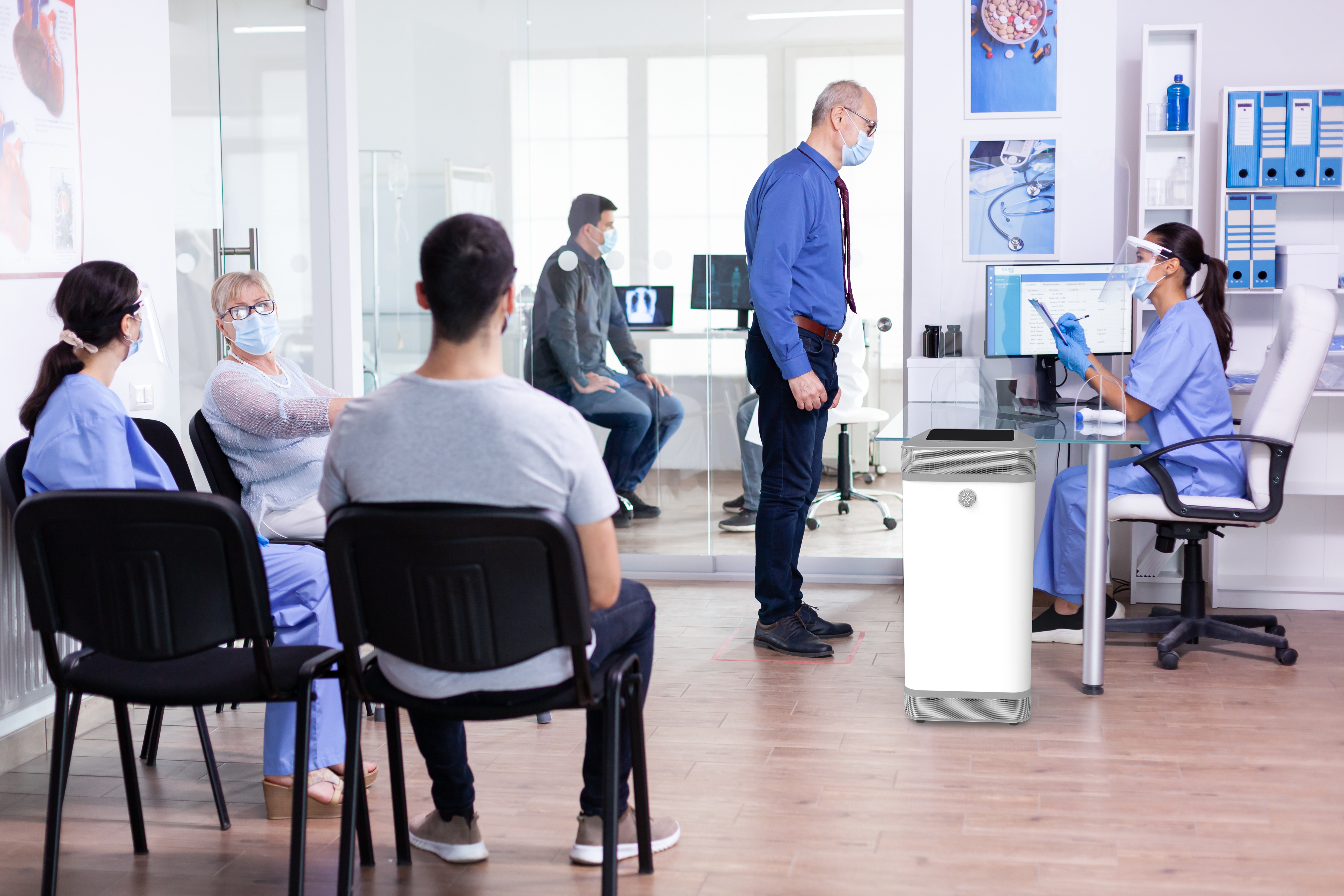Emergency & waiting rooms
Provide healthier & cleaner environments
Inactivate airborne pathogens & reduce pollutants in the ER
Emergency rooms and waiting rooms are high-risk areas for infection due to the high volume of infectious and vulnerable patients who can be waiting for treatment in close proximity for several hours, often in confined and poorly ventilated spaces.
Not only does this environment heighten the risk of infectious diseases being spread to healthcare personnel and other patients, but also increases the chances of acquiring new infections associated with treatment.
Viruses
Reduce transmission of viruses like SARS-CoV-2, influenza and norovirus.
Particles
Reduce allergens like dander, pollen, mold spores, and dust.
Bacteria
Inactivate airborne bacteria including superbugs like MRSA, TB, and C.diff.
Air disinfection for healthcare environments
Wherever people are coming and going, pathogens and pollutants are being introduced to the indoor environment. WellAir's portable air disinfection devices and air cleaning systems use our patented NanoStrikeTM Technology to inactivate aerosolized viruses, bacteria, and fungi, 24 hours a day.
Our Defend range of FDA-cleared Class II medical devices combines our powerful NanoStrike Technology with a triple-stage filtration system. These devices not only inactivate pathogens but clear the air of pollutants such as pollen, particulate matter (PM), volatile organic compounds (VOCs), gases, chemicals, and odors.
The Importance of WellAir Air Cleaning and Purification Devices in Intensive Care Units
This peer-reviewed study was published in the Journal of Hospital Infection reports on WellAir Air Cleaning and Purification Devices in an ICU. This first-of-its-kind study highlights the number of microorganisms in the air and evaluates the effectiveness of air purifiers in reducing the rate of nosocomial infections within the ICU.
The Defend 400 Significantly Reduces Airborne Bacteria in an Urgent Care Outpatient Facility
An urgent care outpatient facility located in New Jersey that was running at normal capacity and actively treating patients tested the Defend 400 at one of their three locations in November 2021. Testing was carried out in a breakroom, examination room, nurse station and waiting room.
During the 5 consecutive days, the Defend 400 significantly reduced total bacterial count by 52%, including a 60% reduction in opportunistic pathogens and a 43% reduction in pathogenic bacteria.
Healthcare-acquired infections
Why Disinfect the Air
Healthcare-acquired infection (HAI) is a serious and widespread problem with an estimated 1 in 10 patients acquiring an infection during a hospital stay. In American hospitals alone, the Centers for Disease Control (CDC) estimates that HAIs account for an estimated 1.7 million infections and 99,000 associated deaths each year.
Over 30% of healthcare-acquired infections possibly involve airborne transmission at some point.
